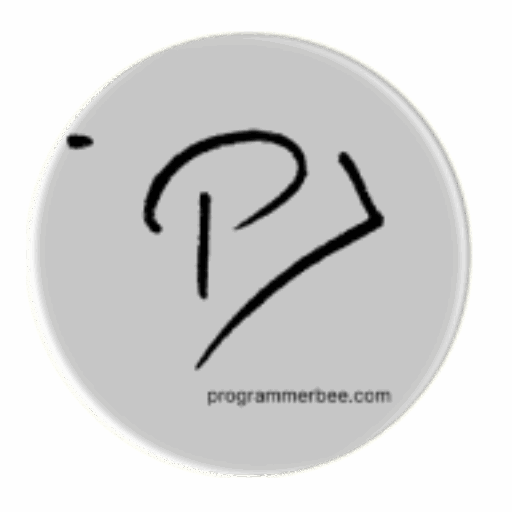12
3
6
9
The structure and the essentials
- We need second , minute and hour hand,
- second hand will circle through 360 degree every minute that means in every second it will move 6 degree
- Minute hand moves 6 degree in every minute
- And the hour hand moves 30 degree every hour
So we just add this logic in the clock that's it.
We get the time from browser
const now = new Date();
const hours = now.getHours();
const minutes = now.getMinutes();
const seconds = now.getSeconds();
Then access the clock hand from JavaScript
const hourHand = document.getElementById('hour-hand');
const minuteHand = document.getElementById('minute-hand');
const secondHand = document.getElementById('second-hand');
Update the position based on the current time
const hourDeg = (hours % 12) * 30 + minutes / 2;
const minuteDeg = minutes * 6;
const secondDeg = seconds * 6;
hourHand.style.transform = `rotate(${hourDeg}deg)`;
minuteHand.style.transform = `rotate(${minuteDeg}deg)`;
secondHand.style.transform = `rotate(${secondDeg}deg)`;
Add everything in a function also set interval of 1 second to update the clock every second
function updateClock() {
const now = new Date();
const hours = now.getHours();
const minutes = now.getMinutes();
const seconds = now.getSeconds();
// Analog clock
const hourHand = document.getElementById('hour-hand');
const minuteHand = document.getElementById('minute-hand');
const secondHand = document.getElementById('second-hand');
const hourDeg = (hours % 12) * 30 + minutes / 2;
const minuteDeg = minutes * 6;
const secondDeg = seconds * 6;
hourHand.style.transform = `rotate(${hourDeg}deg)`;
minuteHand.style.transform = `rotate(${minuteDeg}deg)`;
secondHand.style.transform = `rotate(${secondDeg}deg)`;
// Digital clock
const digitalClock = document.getElementById('digital-clock');
digitalClock.textContent = `${hours.toString().padStart(2, '0')}:${minutes.toString().padStart(2, '0')}:${seconds.toString().padStart(2, '0')}`;
}
// Update the clock every second
setInterval(updateClock, 1000);
// Initial call to set the clock right away
updateClock();
The complete code
<!DOCTYPE html>
<html lang="en">
<head>
<meta charset="UTF-8">
<meta name="viewport" content="width=device-width, initial-scale=1.0">
<title>Simple Clock</title>
<style>
body {
background-color: rgb(139, 126, 126);
}
.clock-container {
color:#fffbe4;
background-color: rgb(105, 96, 96);
display: flex;
justify-content: center;
align-items: center;
height: 100vh;
font-family: Arial, sans-serif;
}
#analog-clock {
border: 10px solid transparent;
border-image: linear-gradient(to right, #b59d72, #ffe79a) 1;
box-shadow: inset -1px 0px 12px 9px rgba(0, 0, 0, 0.5);
width: 300px;
height: 300px;
position: relative;
}
.clock-hand {
box-shadow: 0 0 10px #00000080;
position: absolute;
background: linear-gradient(to right, #b59d72, #ffe79a);
transform-origin: 50% 100%;
width: 4px;
top: 50%;
left: 50%;
}
#hour-hand {
height: 50px;
margin-top: -50px;
}
#minute-hand {
height: 70px;
margin-top: -70px;
}
#second-hand {
height: 80px;
background: linear-gradient(to right, #b59d72, #ffe79a);
margin-top: -80px;
}
.hour-number-left-right {
margin-top:-8px;
position: absolute;
font-size: 16px;
font-weight: bold;
}
.hour-number-top-bottom {
margin-left: -6px;
position: absolute;
font-size: 16px;
font-weight: bold;
}
.hour-number {
position: absolute;
font-size: 16px;
font-weight: bold;
}
.minute-dot {
position: absolute;
background-color: #333;
width: 4px;
height: 4px;
border-radius: 50%;
}
#digital-clock {
display: flex;
position:absolute;
margin-top:400px;
font-size: 48px;
}
</style>
</head>
<body>
<div class="clock-container">
<div id="analog-clock">
<!-- Clock Hands -->
<div id="hour-hand" class="clock-hand"></div>
<div id="minute-hand" class="clock-hand"></div>
<div id="second-hand" class="clock-hand"></div>
<!-- Hour Numbers -->
<div class="hour-number-top-bottom" style="top: 10px; left: 50%;">12</div>
<div class="hour-number-left-right" style="top: 50%; left: 95%;">3</div>
<div class="hour-number-top-bottom" style="bottom: 10px; left: 50%;">6</div>
<div class="hour-number-left-right" style="top: 50%; left: 5%;">9</div>
<!-- Minute Dots -->
<div class="minute-dot" style="top: 15%; left: 50%;"></div>
<div class="minute-dot" style="top: 50%; left: 85%;"></div>
<div class="minute-dot" style="bottom: 15%; left: 50%;"></div>
<div class="minute-dot" style="top: 50%; left: 15%;"></div>
</div>
<div id="digital-clock"></div>
</div>
<script>
function updateClock() {
const now = new Date();
const hours = now.getHours();
const minutes = now.getMinutes();
const seconds = now.getSeconds();
// Analog clock
const hourHand = document.getElementById('hour-hand');
const minuteHand = document.getElementById('minute-hand');
const secondHand = document.getElementById('second-hand');
const hourDeg = (hours % 12) * 30 + minutes / 2;
const minuteDeg = minutes * 6;
const secondDeg = seconds * 6;
hourHand.style.transform = `rotate(${hourDeg}deg)`;
minuteHand.style.transform = `rotate(${minuteDeg}deg)`;
secondHand.style.transform = `rotate(${secondDeg}deg)`;
// Digital clock
const digitalClock = document.getElementById('digital-clock');
digitalClock.textContent = `${hours.toString().padStart(2, '0')}:${minutes.toString().padStart(2, '0')}:${seconds.toString().padStart(2, '0')}`;
}
// Update the clock every second
setInterval(updateClock, 1000);
// Initial call to set the clock right away
updateClock();
</script>
</body>
</html>
Get the code from github
https://github.com/01one/analog-html-clock
